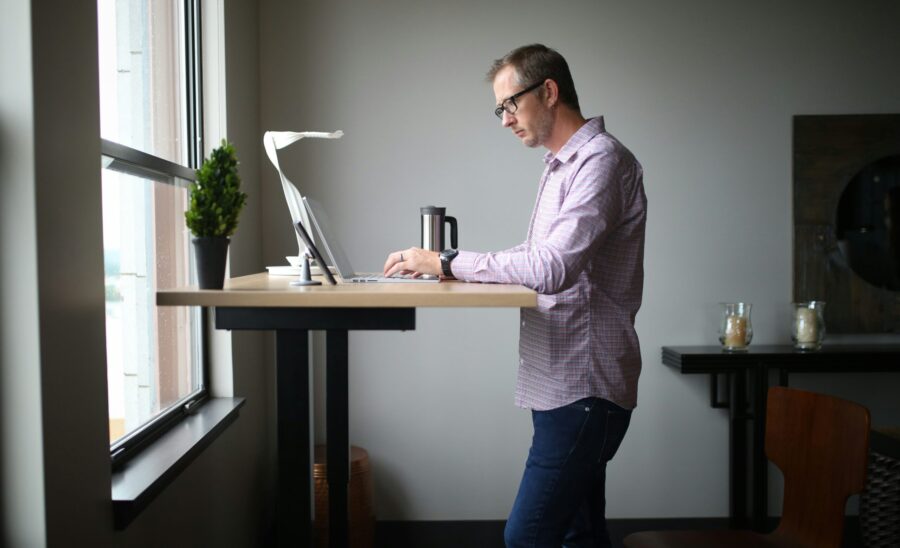As the modern working life evolves, the emphasis on health and well-being is becoming increasingly prominent. One innovation gaining traction is the use of walking pads and desk treadmills, both in the office and home office. According to Google Trends, searches for ‘desk treadmills’ have increased 42% within the last month alone.
These devices promise to keep employees moving throughout the day, but like any workplace addition, they come with their pros, cons, and potential health risks. Here, Furniture at Work takes a closer look at how walking pads and desk treadmills stack up in the modern office.
Get moving: The upsides of walking while you work
Exercise without leaving your desk:
Walking pads and desk treadmills encourage employees to sneak in physical activity without having to step away from their workstations. This is especially useful in jobs that demand long hours of sitting, helping fight off common sedentary-related issues like bad posture and poor circulation. Even light walking throughout the day can boost energy levels, circulation, and mood—keeping both your body and mind in motion.
Improved brainpower and productivity:
A little movement can often spark creativity and help with focus. Light walking can stimulate brain activity, leading to improved problem-solving and increased productivity. If you tend to zone out during long stints at your desk, a gentle stroll while you work might help you stay engaged and mentally sharp.
Flexibility and ergonomics go hand-in-hand:
These devices are often paired with adjustable standing desks, allowing you to seamlessly switch between sitting, standing, and walking throughout the day. This variety reduces physical strain from staying in one position too long and gives employees the freedom to move in ways that feel comfortable and natural to them.
The drawbacks you might not expect
Distraction alert:
Multitasking on a walking pad or treadmill can be a challenge, especially when tasks require high focus. Trying to type or read complex reports while walking might make concentration harder for some employees. Plus, the quiet hum of the treadmill might not be appreciated by everyone, particularly in open offices where noise can quickly become an issue.
Big and bulky:
Walking pads and treadmills aren’t exactly space savers, and many offices may struggle to find room for them. Standard workstations may need to be reconfigured, or new desks purchased, to accommodate these gadgets. For smaller offices, this can be a logistical and financial headache.
The health lowdown
Watch your posture:
Walking while working may be great for movement, but poor posture is a real risk if your setup isn’t ergonomically correct. Without proper alignment of the desk, screen, and keyboard, you could end up with aches and pains in your neck, back, or shoulders. It’s important to ensure your workstation is adjusted properly to avoid these issues.
Don’t overdo it:
While moving more is a good thing, too much walking can lead to fatigue. Walking for hours at a time, even at a slow pace, can cause discomfort in your joints and muscles. Like anything, balance is key, and moderation will prevent overuse injuries and keep you feeling good.
Safety first:
Walking while working requires a bit of coordination, and not everyone is a natural at it. There’s always a risk of tripping or losing balance while multitasking. People with pre-existing conditions or balance issues should be cautious, and it’s a good idea for anyone to check in with a healthcare professional before making walking pads part of their daily routine.
Joanne is the editor for Workplace Wellbeing Professional and has a keen interest in promoting the safety and wellbeing of the global workforce. After earning a bachelor's degree in English literature and media studies, she taught English in China and Vietnam for two years. Before joining Work Well Pro, Joanne worked as a marketing coordinator for luxury property, where her responsibilities included blog writing, photography, and video creation.



